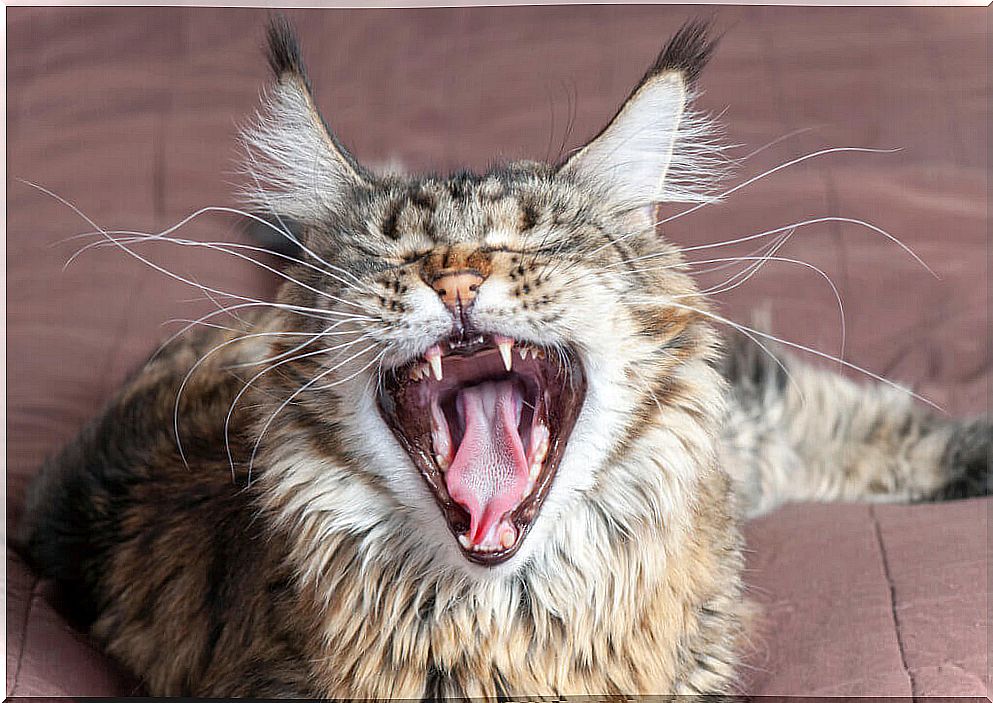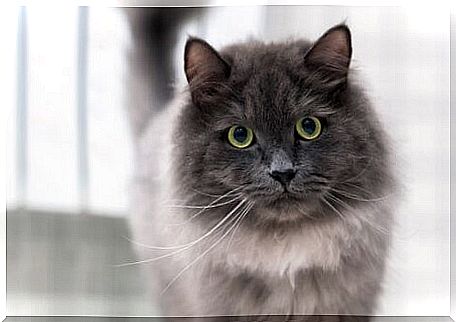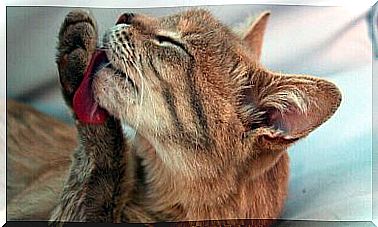4 Myths About Cats’ Whiskers

Just as it is said that black cats are bad luck, that purring indicates that they are happy or that they should drink cow’s milk, there are also several myths surrounding cats’ whiskers.
Cats’ whiskers are deeply embedded in the skin, surrounded by nerves, sensory cells and muscles, connected to the locomotor and nervous systems. In this way, they send sensory messages to the brain, functioning as tireless explorers. Here you will learn 4 myths about these structures.
1. They are just for cats to locate themselves
Cats’ whiskers are very sensitive to vibrations and changes in the environment and, therefore, are of fundamental importance for their spatial orientation along with the rest of the senses, according to ethologist Rosana Álvarez. Therefore, they are not just for location.
Whiskers are also called vibrissae, because through them cats perceive the air and nearby objects. In this way, according to the newspaper El Comercio , cats can detect the size and location of elements around them.
In addition, these structures help cats with near vision and night vision, walk in a straight line, calculate distances when jumping, and distinguish the size and location of their prey.
In any case, whiskers are not just used to measure the width of the places where the cat walks or the proximity of objects. In addition to all these functions, they also help determine the animal’s mood.
If the cat is relaxed, its whiskers will be slightly to the side. If he’s happy or curious, his whiskers will be stretched out. As the animal becomes more interested in something, these structures extend until they are in front of the muzzle. And if he’s scared or angry and sick, his whiskers will be left behind.

2. The mustaches are only on the face
Whiskers are all-purpose tactile hairs—thicker and longer than all cat hairs— located on the eyes, ears, jaw, and forepaws. It is because of the very sensitive sensors that fulfill the function of a very useful radar. So it’s not just facial structures.
3. Cats’ whiskers can be cut
Imagine that you are a feline and that all these characteristics mentioned above cease to exist in your life. Cats’ whiskers are essential for their daily lives, for their location and their comfort in an environment. For these reasons, never cut or pull a cat’s whiskers, as animals can become disoriented and frightened without this fine radar.
Also, these structures have many nerve endings, and if you cut them, the cat will feel pain. On the other hand, if for some reason the animal loses its whiskers, they will grow back in a month or two, if the hair bulb is still healthy.
4. The cat loses balance without the whiskers
As mentioned earlier, cats use their whiskers as sensors or radar, but not for balance. Balance in the cat is a sophisticated circuit formed by the muscular, tactile and visual system.
If the cat lost its whiskers, it would have to rely much more on these other senses to explore the territory or see up close and at night, as well as to hunt and express its emotions. However, this does not mean that he will lose his ability to move and balance completely.

As you’ve seen, cats’ whiskers are necessary. And, as a tutor, you must take many features of that element into consideration. Thus, you will take better care of your feline and avoid situations that bother or harm it.









